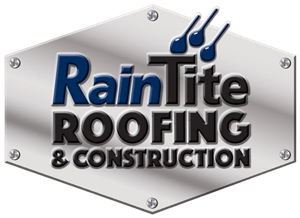Rapid City homeowners are no strangers to extreme weather conditions, including heavy storms, hail, and strong winds, which can significantly damage your roof. Reacting quickly and appropriately to storm damage is crucial in maintaining your home’s integrity and preventing further, more costly issues. In this informative guide, we will provide essential tips and advice for evaluating, maintaining, and repairing your roof after a storm to help you protect your most cherished investment—your home.
Being vigilant and proactive in your post-storm roof care is central to safeguarding your household from ongoing damage and keeping your home safe and functional. By understanding the essential steps to take after a storm and applying expert tips for maintaining and repairing your roof, you can keep your home safe, secure, and in good condition for years to come.
Identifying Storm Damage: Visual Cues and Hidden Issues
Recognizing the signs of storm-damaged roofs is crucial in determining the most effective response plan. Look for the following indicators of potential damage:
1. Missing, damaged, or displaced shingles: Inspect your roof for missing, cracked, curled, or displaced shingles, all of which signal potential storm damage.
2. Leaks and water spots: Check your attic and interior ceilings for leaks, moisture, or water stains resulting from compromised roofing.
3. Dents in gutters and flashing: Pay close attention to your roof’s gutters and flashing for dents or deformations, often caused by hail or wind-blown debris.
Conducting a thorough inspection of your roof following a storm is vital. However, remember that not all damage is visible. Engaging experienced roofing professionals can ensure a comprehensive assessment and detection of hidden damages.
The Importance of Prompt Action: Preventing Further Damage and Costly Repairs
Attending to storm-related roof damage on time can avert more severe and costly issues. Key reasons to respond promptly include:
1. Preventing leaks: Damaged roofing materials may lead to water infiltration, requiring prompt repairs to avoid interior damage.
2. Inhibiting mold growth: Unaddressed water damage can promote mold growth, posing health risks and requiring costly remediation.
3. Maintaining structural integrity: Minor roof damage can compromise the roof’s structural integrity if left unattended, potentially leading to extensive repairs or even replacement.
Steps to Take After a Storm: Inspection, Tarping, and Insurance Claims
Following a storm, take these essential steps to address any roof damage promptly:
1. Conduct a safe roof inspection: After ensuring the storm has passed and conditions are safe, perform a visual inspection of your roof from the ground or through windows. Utilize binoculars if necessary and avoid walking on the roof without proper safety measures.
2. Secure a protective tarp: To protect your home from further damage, place a tarp over the damaged area of your roof. Avoid using nails or screws that may cause additional damage—instead, use sandbags or weighted objects to secure the tarp in place.
3. Contact your insurance provider: Report the roof damage to your insurance company and initiate a claim. Inquire about coverage, deductible costs, and the claim process timeline.
Consider working with a professional roofing company throughout your post-storm roof repairs for a smoother experience and enhanced peace of mind.
DIY Maintenance and Repair vs. Hiring Professionals
While homeowners can perform some simple maintenance tasks, it’s crucial to understand your limits and prioritize safety. Here’s a breakdown of DIY-friendly tasks and repairs that warrant professional help:
DIY maintenance and repair tasks:
1. Cleaning gutters and downspouts: Remove debris from gutters and downspouts to prevent water damage from improper drainage.
2. Inspecting and replacing damaged shingles: Closely following proper safety measures, you may be able to inspect and replace a few damaged shingles on your own.
3. Trimming nearby tree branches: Keep tree branches trimmed and away from your roof to minimize potential storm damage.
Tasks for professionals:
1. Comprehensive roof inspection: Hire a professional roofer to conduct a thorough inspection and detect potential hidden damages.
2. Advanced repairs and replacements: Engage professionals for extensive repairs, such as replacing many shingles or addressing structural damage.
3. Installation of a new roof: When roof damage necessitates a complete replacement, it’s vital to leave the job to experienced professionals.
Preventive Measures for Future Storms: Prepare and Protect Your Roof
Proactive measures can help minimize storm-related roof damage. Consider these strategies to protect your rooftop better:
1. Schedule regular roof inspections: Routine inspections by professionals can identify vulnerabilities and potential issues before they become severe.
2. Clean gutters and downspouts: Regularly clean gutters and downspouts to maintain proper drainage during storms.
3. Trim nearby tree limbs: Trim trees near your home to reduce the risk of limbs falling onto your roof and causing damage.
4. Upgrade roofing materials: Consider upgrading to more durable, weather-resistant ones for long-lasting protection.
Conclusion:
Proactively addressing storm damage to your roof is critical to preserving your home’s integrity, value, and safety. Utilize these expert tips and guidance to navigate the process of inspecting, maintaining, and repairing your roof after a storm. Partnering with experienced professionals ensures your home receives the best possible care so you can focus on restoring comfort and peace of mind.
For all your Rapid City roofing repair needs after a storm, trust RainTite Roofing & Construction. Contact us to schedule your free, no-obligation consultation, and let our expert team lend their experience and skill in addressing your storm-related roofing concerns.

